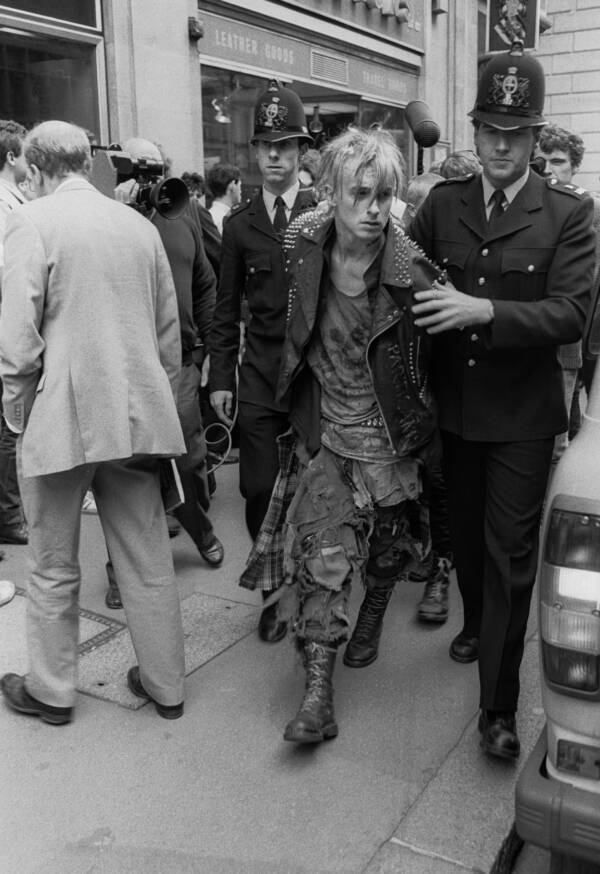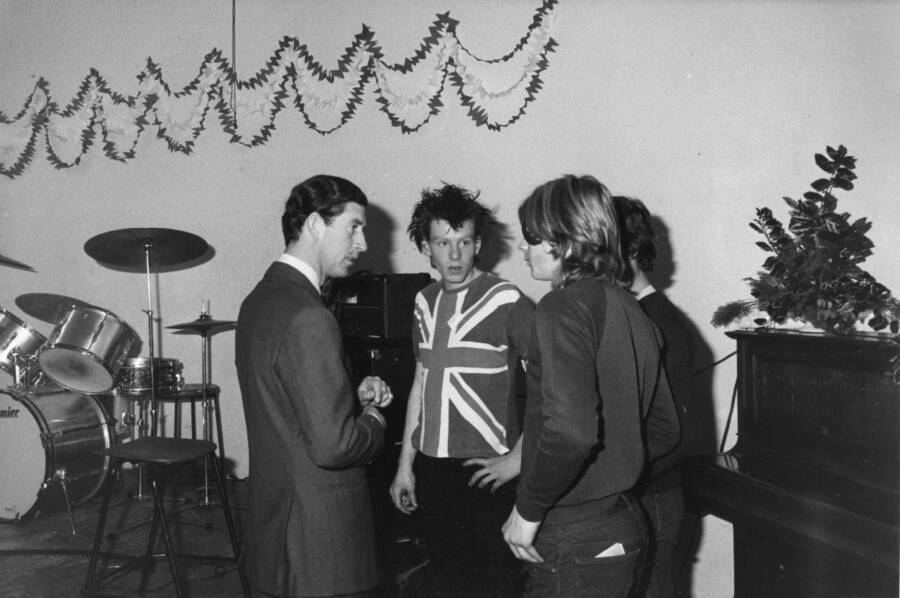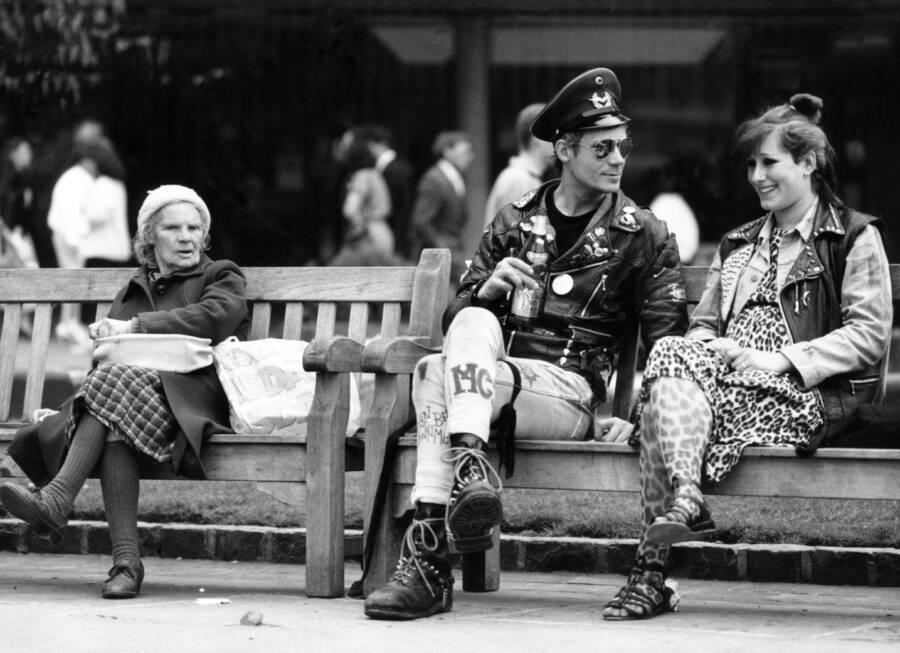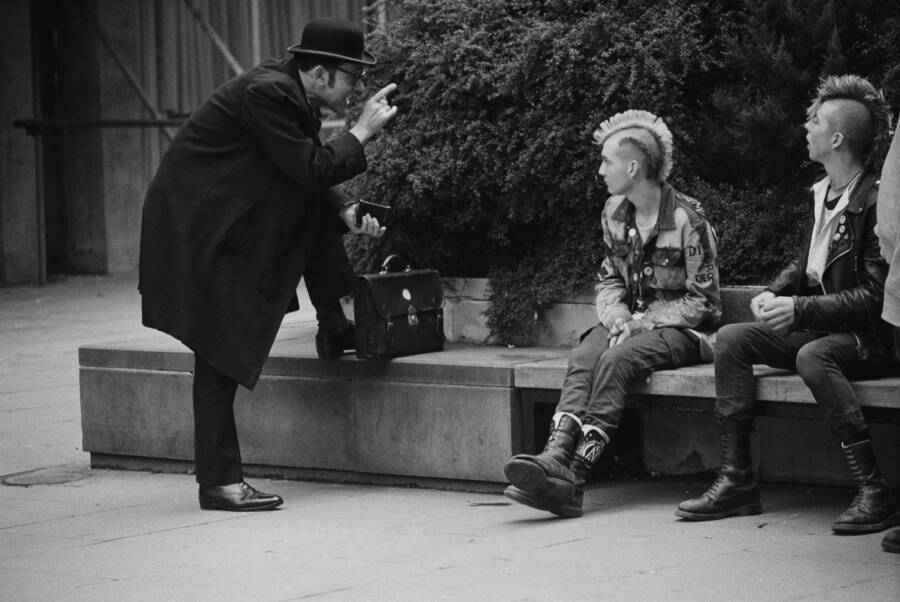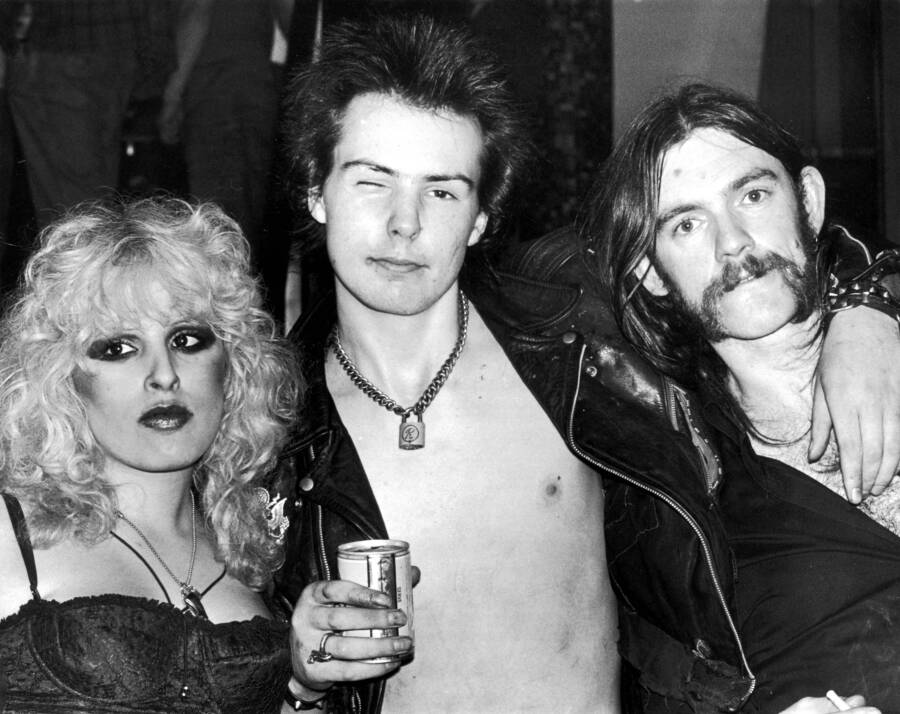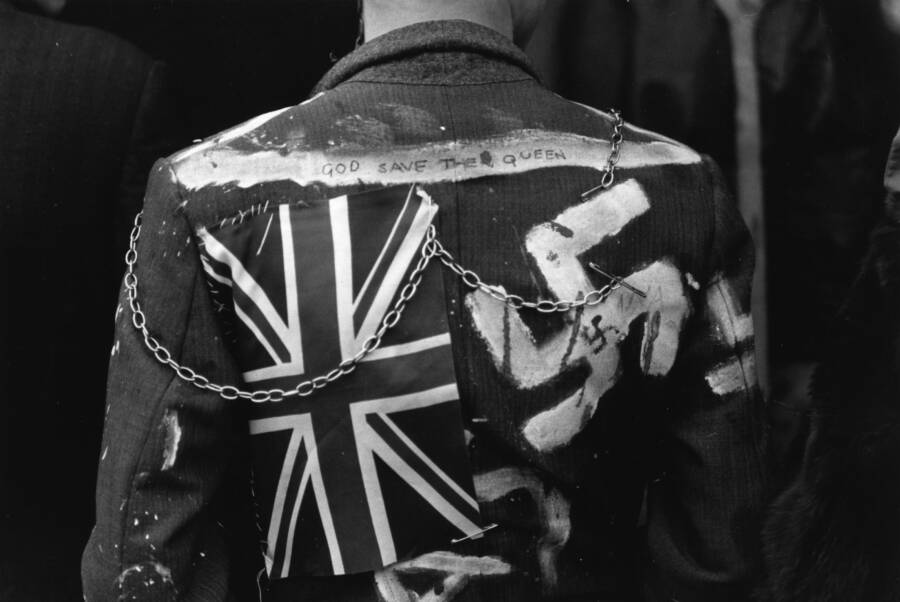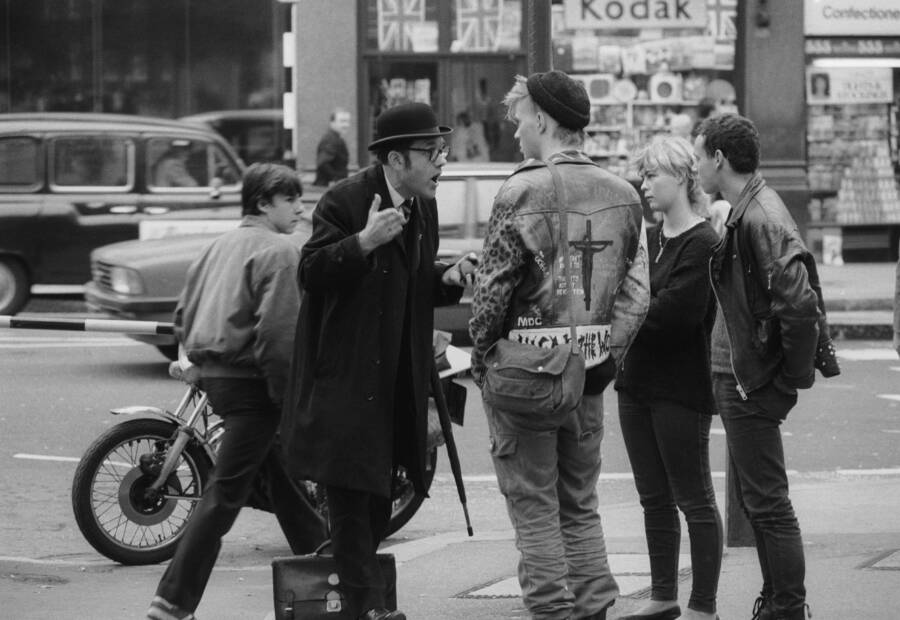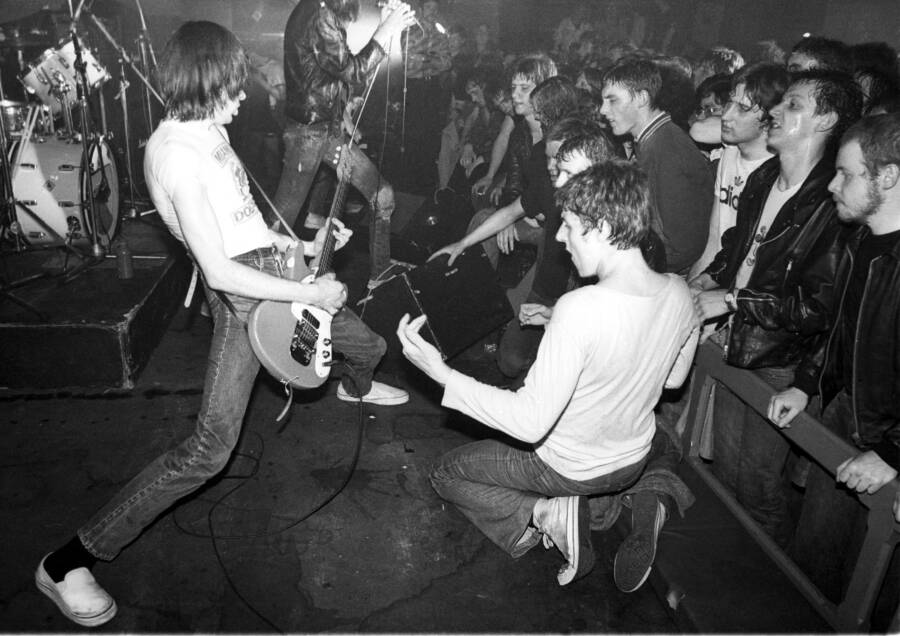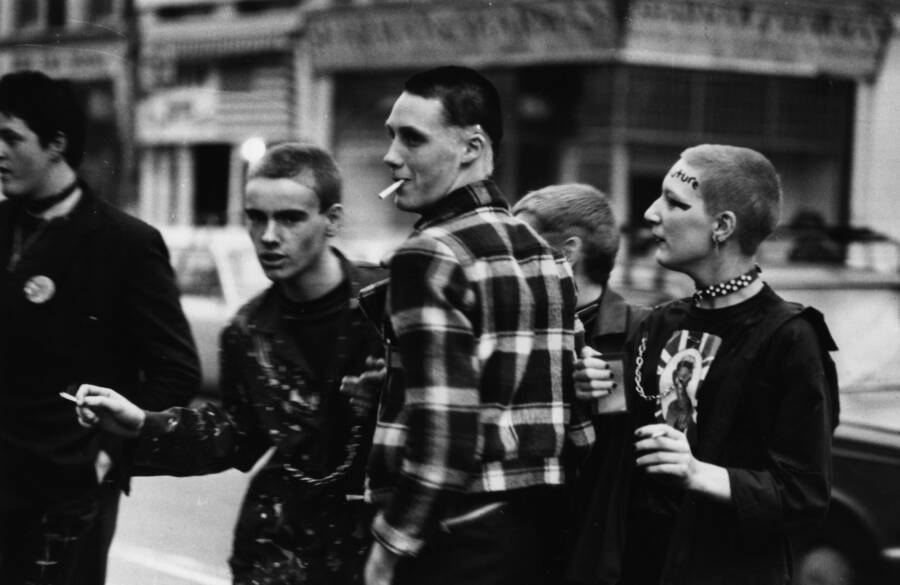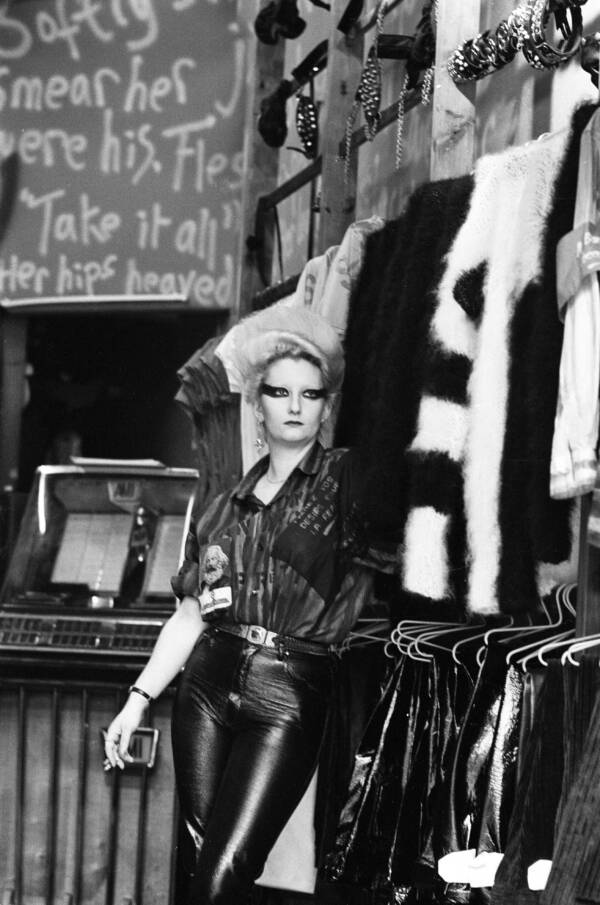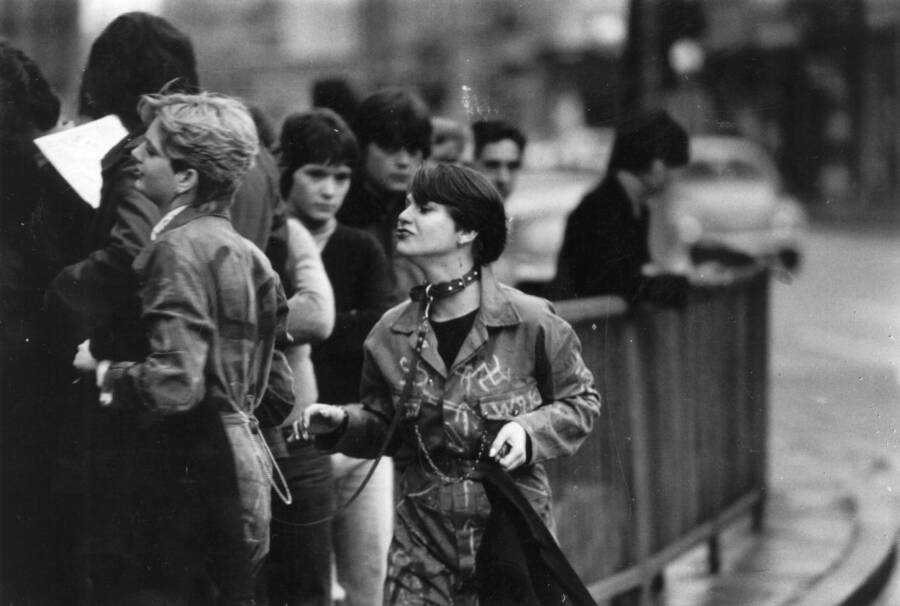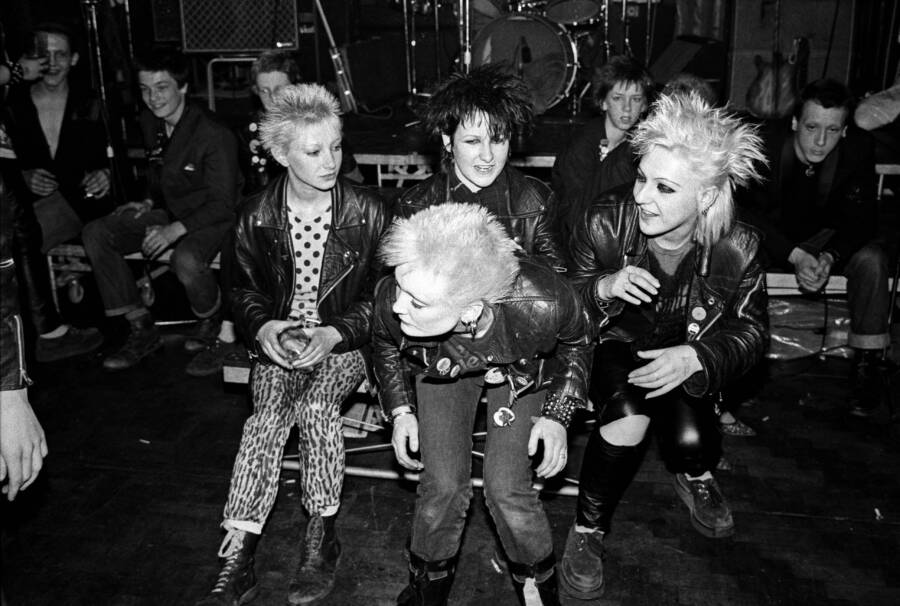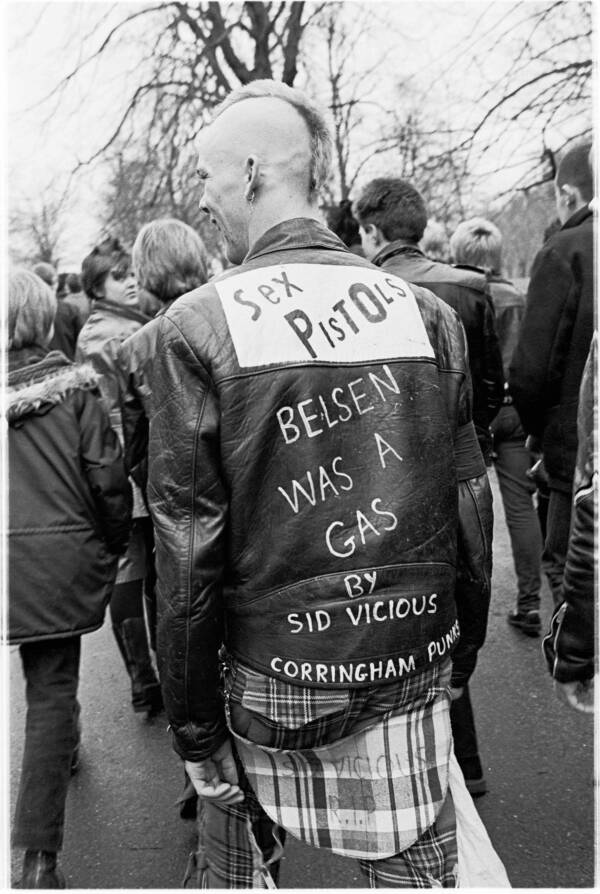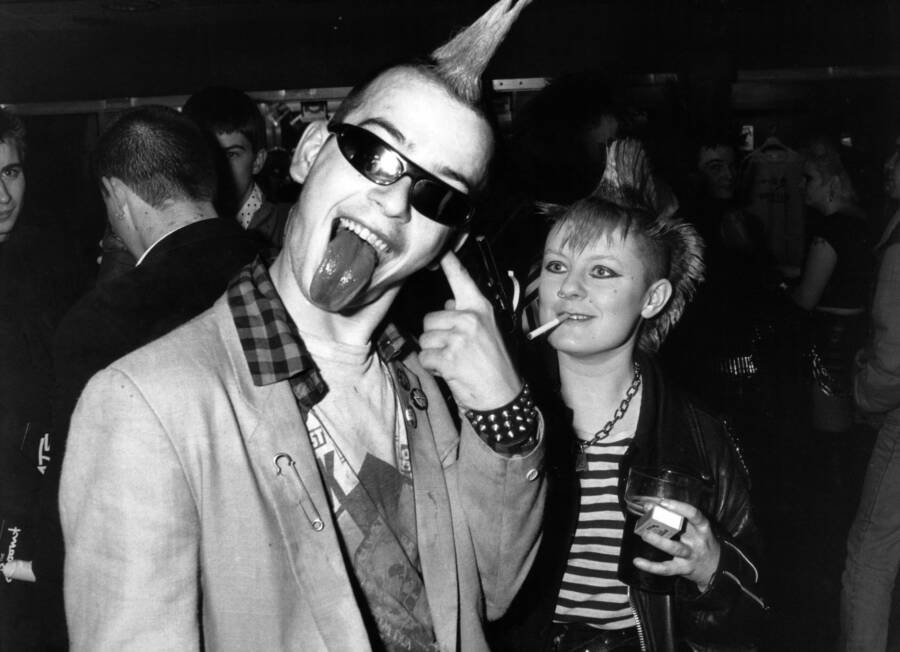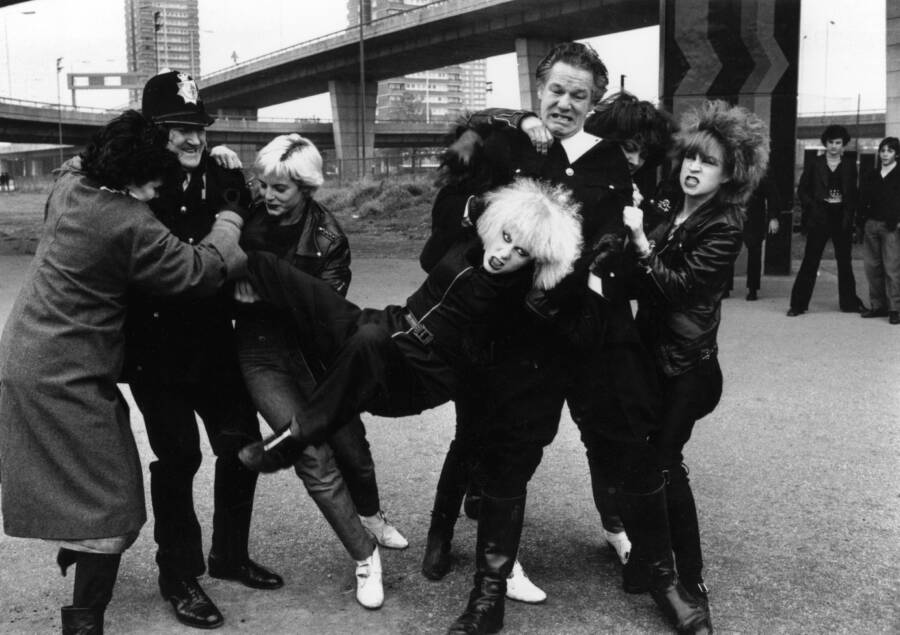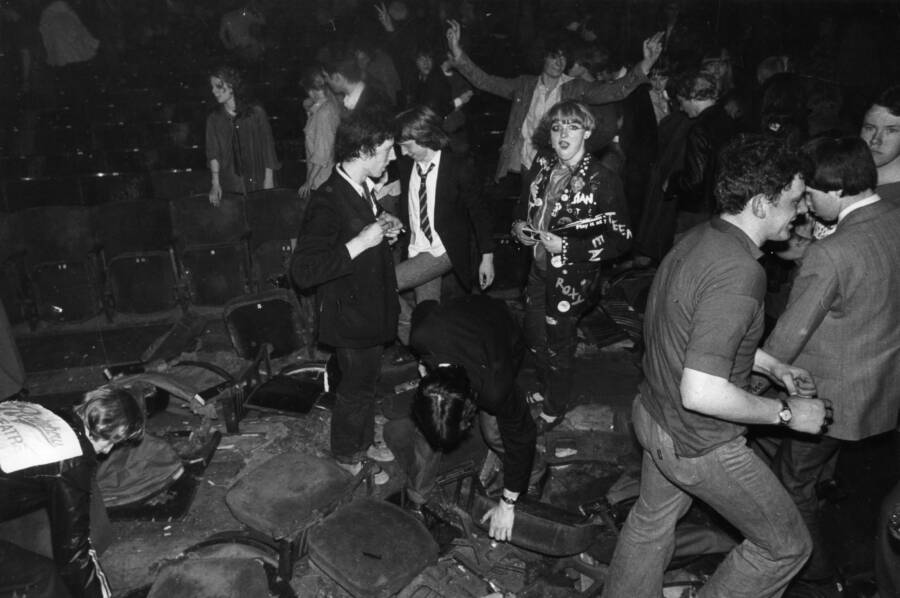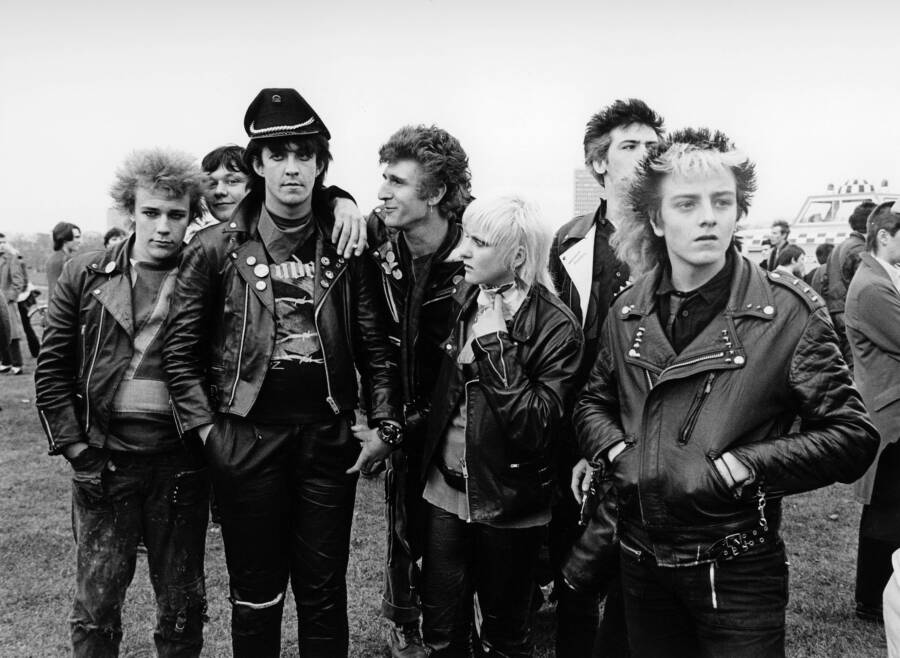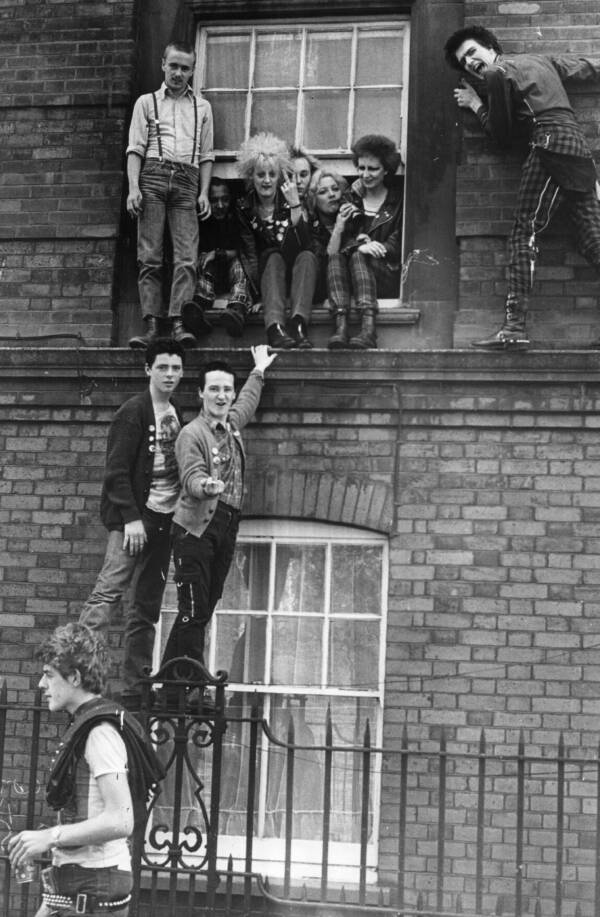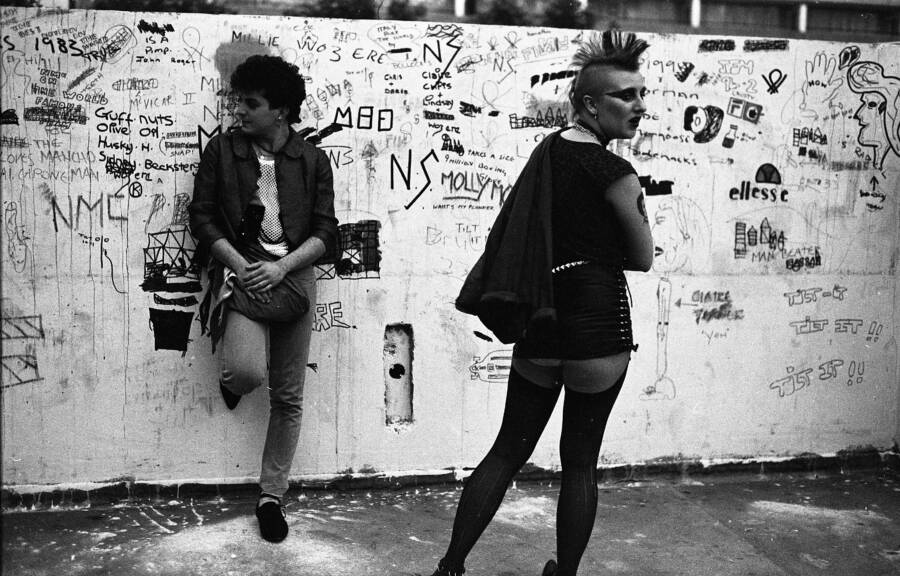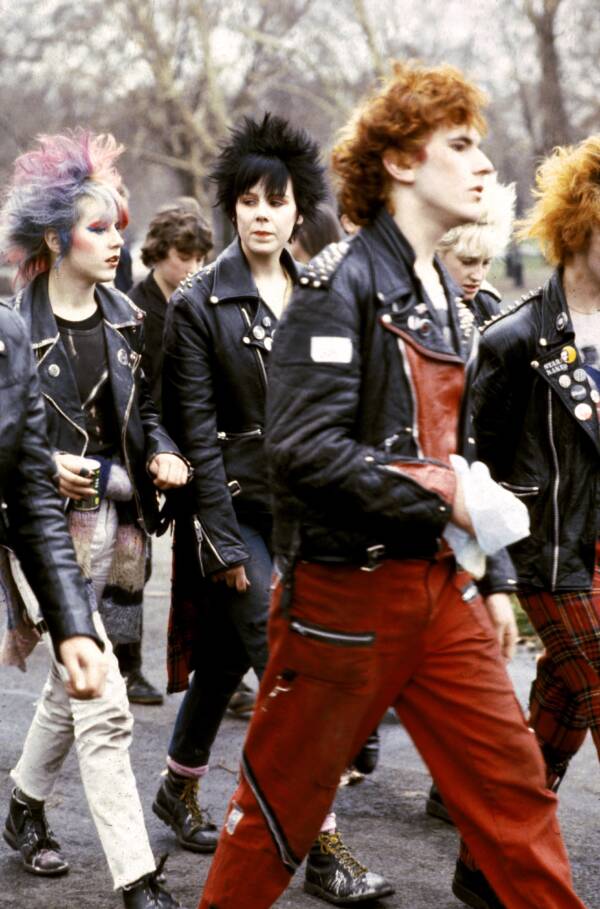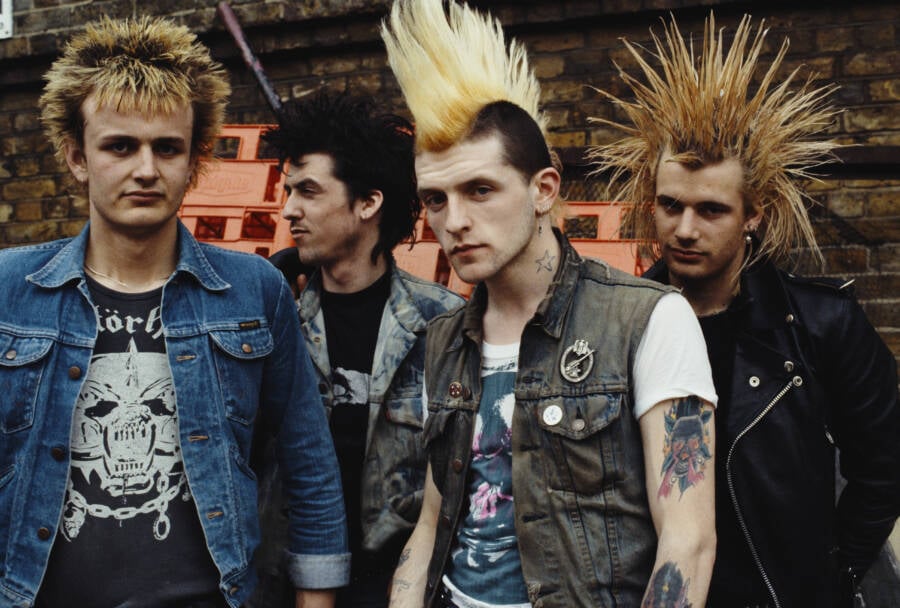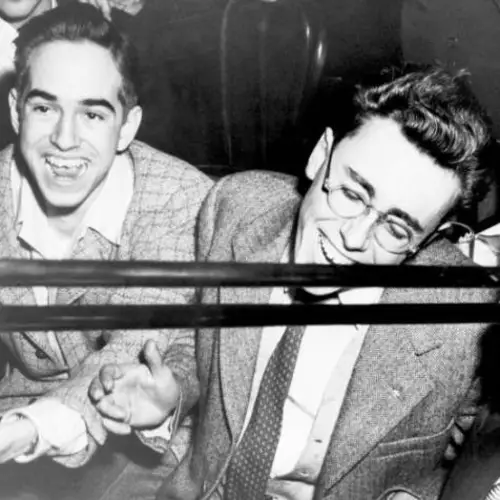In the early 1970s, the punk scene pummeled through the U.K., sweeping up rebellious youths disenchanted with British society.
The music was loud, the fashion outrageous, and the musicians were wild, reckless, and raving — so much so that on a flight with the band Sex Pistols one passenger demanded, "What are we flying with — a load of animals?" This was the world of British punk in the 1970s and 1980s.
It didn't make sense to outsiders because it wasn't supposed to. British punk was a scream of rebellion from young people let down by a crumbling economy. For a smattering of wild years, it tore through British culture like a savage animal.
But the magic of punk was in its rebellion. Success was poison, and thus, the movement was fleeting, intense, and vividly memorable to all that lived through it.
The Transatlantic Origins Of British Punk
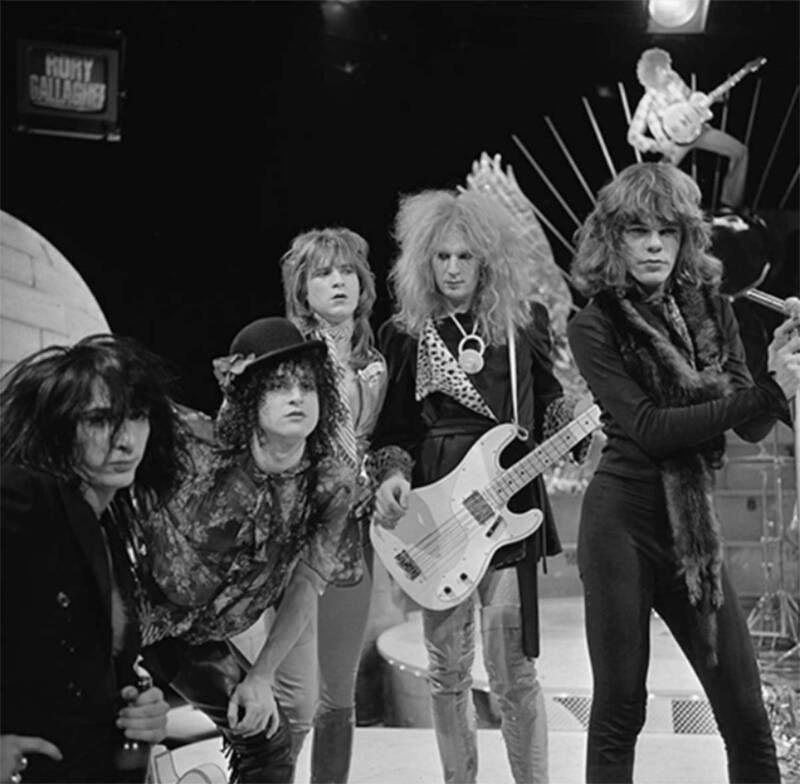
Wikimedia CommonsThe New York Dolls, an early punk band.
The first hints of punk music came out of Detroit, Michigan in the 1960s, when bands like Iggy and the Stooges and MC5 whipped up a new sort of sound that tossed the rock n' roll rulebook out the window. Their music was intentionally raw and crude — and often political.
"We wanted to kick ass and raise consciousness," recalled John Sinclair, MC5's manager.
This combination of political anger and explosive music birthed something new into the world of rock. One rock critic called MC5's sound "a catastrophic force of nature the band was barely able to control."
Before long, this exciting new sound powered its way east to New York City. There, bands like the New York Dolls and Television embraced — and amplified — the new sound. A failed British art student named Malcolm McLauren took notice.
McLauren had run a clothing store back in London with famous fashion designer Vivianne Westwood called Let It Rock. The goal of the store, McLauren later said, was to "run wild" and "sell nothing at all." His outlook fit snugly with the nascent punk scene in NYC.
There, McLauren managed and dressed the New York Dolls, encouraging their tendency to shock by throwing up Nazi salutes or vomiting in front of photographers.
After the band fizzled out, McLauren took these ideas about punk music back home to London — and the British punk scene was born.
Inside The World Of British Punk

Wikimedia CommonsThe Sex Pistols, a huge part of the British punk movement, in 1977.
In the U.K., the concept of punk rock met an eager audience of youths who felt disenchanted by British society. A 1978 article in Time Magazine described the phenomenon of punk rock in Britain thusly:
"In Britain, punk is the voice (some would say vice) of working-class kids who cannot find jobs and care not a whit for the traditions of their homeland."
In punk music, those wayward teens found solace and validation. There was also punk fashion, which was eagerly supplied by McLauren and Westwood at their clothing store SEX. Soon, McLauren was managing a band of young Brits called the Sex Pistols — who shocked the nation and delighted British youths after they dropped f-bombs on Bill Grundy's Today show.
The appearance cost Grundy his job — but brought the Sex Pistols to the forefront of British music.
The Sex Pistols would go on to shock polite British society again and again. Radio DJs were encouraged not to say the whole title of their only album, "Never Mind The Bollocks," out loud. Record stores refrained from showing the album in their window.
Plus, the Sex Pistols made sure their single "God Save the Queen" dropped on the same day as Queen Elizabeth's 1977 Silver Jubilee. The BBC promptly banned both the song and the album cover, which featured the Queen.
"This is punk rock," quipped NBC News in 1977. "And its purpose is to promote violence, sex, and destruction, in that order."
But what shocked many adults delighted British — and American — youths. Before long, other punk rock bands like The Clash, Joy Division, and Buzzcocks roared onto the scene. British youth swarmed the streets of London in leather jackets, ripped fishnets, and mohawks.
In "God Save The Queen," they found something to admire. The song was originally titled "No Future" and British youths took this up as a rallying cry against the establishment.
But punk rock held an inherent contradiction that made its existence fragile.
"The biggest catastrophe for punk rock would of course be huge success," said Time Magazine in 1977. "How does a rebel maintain his pose while earning $1 million a year?"
The Musical Legacy Of The British Punk Movement
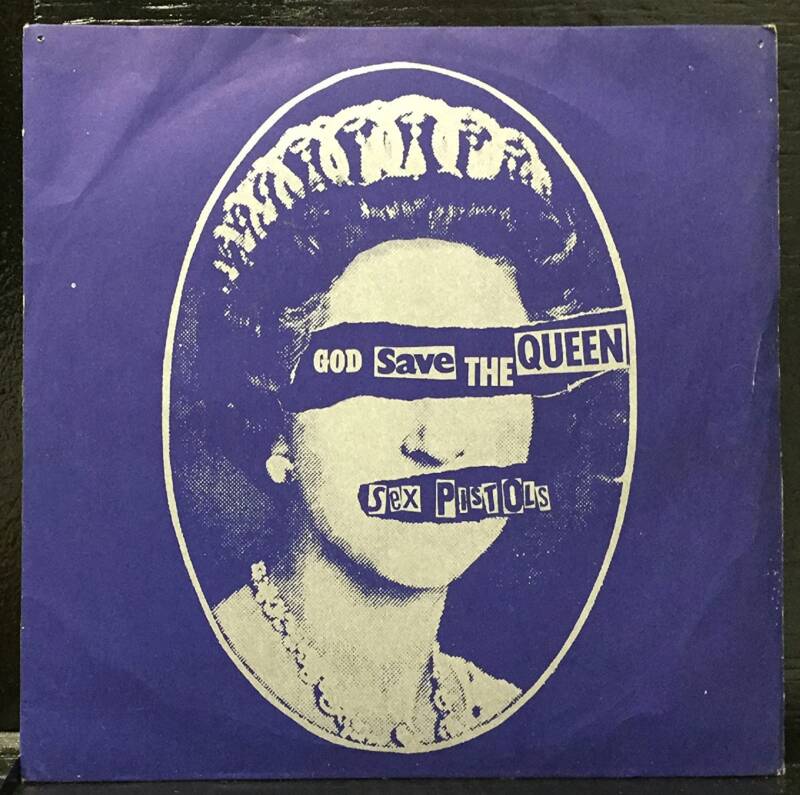
Wikimedia CommonsThe Sex Pistols' single "God Save The Queen" was banned by the BBC.
By 1978, the Sex Pistols had broken up. The punk scene, which would continue to flare into the '80s, soon sputtered and died.
"Nostalgia, that most un-punk of notions, hangs heavy over festivals and 'back in the day' bore-stories," noted the Museum of Youth Culture about the British punk movement. Punk graphics, once a symbol of rebellion, are today used to sell "credit cards and burgers."
So, what is the legacy of British punk? Malcolm McLauren, who arguably helped define punk music, spent most of his life trying to explain the unexplainable.
"I never thought the Sex Pistols would be any good," he told The Times of London in 2009, a year before he died. "But it didn't matter if they were bad."
Buzzcocks guitarist Steve Diggle touched on a similar idea. "A punk motto was to be yourself and do it yourself," he said. "We shocked the country. It pulled the carpet from under the record companies' feet. People were frustrated and they wanted something to identify with."
Put another way, punk embraced ideas of individualism, rebellion, and doing something for the sake of doing it — not because it fell in line with societal expectations or constraints. And that legacy of British punk music continues to be felt in music today.
Bands that emerged in the 1990s, like Nirvana, cited punk as an influence. Green Day, Blink-182, and Linkin Park all embraced a punk model — and with commercial success.
Perhaps nothing sums up the legacy of punk music better than a 1970s graffiti tag smeared on a wall outside the Roxy, a London music venue:
"Punk is dead. Long live punk!"
After reading about the British punk movement, check out these 1970s photos of New York City. Or, look through 25 of rock's craziest stories.

